The Critical Role of Liquid Cooling Water Pumps in AI Servers
Published:2025-04-27
In the era of exponential growth in AI and high-performance computing (HPC), AI servers are facing unprecedented challenges in thermal management. Traditional air-cooling systems have reached their limits, struggling to handle the heat generated by next-gen GPUs and CPUs. Liquid cooling, particularly with advanced water pumps, has emerged as the game-changing solution. This article delves into the significance, working mechanisms, and cutting-edge applications of liquid cooling water pumps in AI servers.
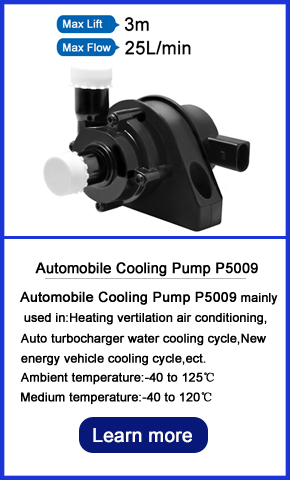 | 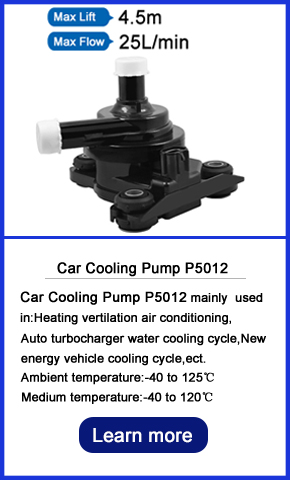 | 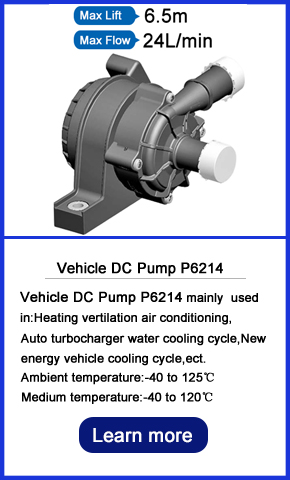 |
 | 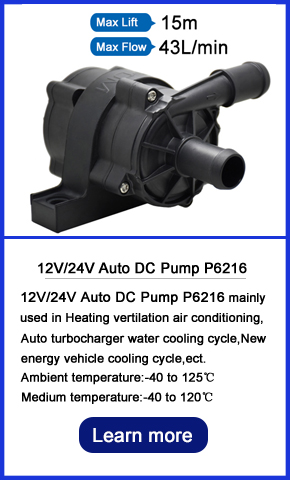 | 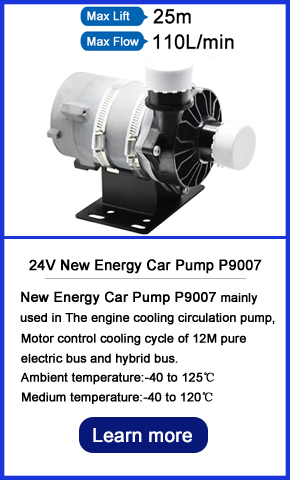 |
1. Overcoming Thermal Challenges in AI Computing
Heat Density Crisis: Modern AI servers, equipped with next-generation GPUs and CPUs, generate up to 1,000W per chip—far exceeding the cooling capacity of traditional air-based systems. As AI workloads (e.g., deep learning training, large language model inference) demand exponentially more compute power, heat density in server racks can surpass 50kW, creating hotspots that risk hardware throttling or failure.
Energy Efficiency: Liquid cooling reduces Power Usage Effectiveness (PUE) to as low as 1.04, compared to 1.3–1.5 for air cooling. This efficiency stems from the superior thermal conductivity of liquids (water is ~25x more effective than air at heat transfer), enabling precise heat removal with minimal energy waste. For large-scale data centers, this translates to a 30% reduction in energy costs associated with cooling.
Reliability: By maintaining component temperatures within tight tolerances (typically ±2°C for GPUs), liquid cooling minimizes thermal stress and hardware degradation. This extends the operational lifespan of AI servers by 30–50%, reducing replacement costs and downtime for mission-critical workloads.
2. Environmental and Economic Benefits
Sustainability: Liquid cooling systems enable up to 90% heat recovery, allowing waste heat to be repurposed for industrial processes, building heating, or even district energy grids. This aligns with global sustainability goals, as data centers strive to achieve carbon neutrality by leveraging closed-loop thermal recycling.
Total Cost of Ownership (TCO): While initial investments in liquid cooling infrastructure are 25–30% higher than air cooling, long-term savings from energy efficiency, extended hardware life, and reduced maintenance costs offset the premium within 3–5 years. For hyperscale operators managing thousands of servers, these savings can reach tens of millions of dollars annually.
How Liquid Cooling Water Pumps Work
1. Key Components of Liquid Cooling Systems
Cold Plate Cooling: Pumps circulate coolant (typically water or a water-glycol mix) through metal cold plates bonded to high-heat components like GPUs and CPUs. Heat is absorbed via conduction, then transferred to a heat exchanger or cooling tower for dissipation. This design achieves up to 98% component coverage, ensuring uniform thermal management across dense compute nodes.
Immersion Cooling: In immersion setups, servers are submerged in dielectric fluids (e.g., fluorinated liquids), where pumps facilitate convective heat transfer. Phase-change immersion cooling uses boiling and condensation to remove heat, capable of handling up to 750kW per rack—ideal for extreme heat densities in AI supercomputing.
Pump Technology: High-precision centrifugal pumps are the backbone of these systems, delivering consistent flow rates (5–20 L/min) and pressure (1–3 bar) to maintain thermal equilibrium. Advanced designs incorporate adaptive speed control, adjusting flow in real-time based on workload demands to balance performance and energy efficiency.
2. Advanced Pump Features
Material Innovation: Components like impellers and housings are often constructed from corrosion-resistant materials such as stainless steel, ceramic coatings, or engineered polymers. These materials withstand chemical additives in coolants and ensure operational lifespans exceeding 10 years, even in harsh environments.
Intelligent Control: Smart pumps leverage sensors and real-time data to optimize performance. For example, they can reduce flow during low-load periods to minimize energy use or increase pressure during peak workloads to prevent thermal runaway. This adaptive control also reduces noise by 20–35 dB compared to fixed-speed pumps.
Redundancy Design: To ensure high availability, many systems employ dual-pump configurations with failover capabilities. This redundancy eliminates single points of failure, critical for AI workloads that run 24/7 without interruption.
Industry Applications and Technical Standards
1. Deployments Across Scales
Hyperscale Data Centers: Large-scale operators use liquid-cooled pumps to manage racks with 100+ GPUs, achieving PUE values as low as 1.04. These setups support applications like generative AI training (e.g., ChatGPT, Stable Diffusion) and real-time inference for services like recommendation engines.
Edge and HPC: At the edge, compact liquid-cooled pumps enable AI processing in space-constrained environments (e.g., 5G cell towers, autonomous vehicles), where air cooling is impractical. In HPC, they facilitate exascale computing for scientific simulations, climate modeling, and drug discovery.
2. Performance Benchmarks
Flow Rate Consistency: Pumps must maintain ±5% flow rate stability under varying loads to prevent thermal gradients in server clusters.
Leak Resistance: Sealing technologies like magnetic couplings or hermetically sealed designs ensure zero leakage, critical for preventing fluid contact with electrical components.
Energy Efficiency: Modern pumps achieve up to 85% volumetric efficiency, minimizing power draw while delivering high head pressure for complex loop designs.
Future Trends in Liquid Cooling Innovation
1. AI-Driven Optimization
Predictive Maintenance: Machine learning algorithms analyze pump vibration, temperature, and flow data to predict component wear and schedule maintenance before failures occur, reducing downtime by up to 40%.
Dynamic Load Balancing: Integrated with server management systems, pumps can adjust in real-time to workload spikes (e.g., sudden surges in AI inference requests), ensuring optimal cooling without over-provisioning energy.
2. Green Technology Advancements
Natural Coolants: A shift toward eco-friendly fluids like deionized water and biodegradable glycol blends minimizes environmental impact, while advanced filtration systems extend coolant lifespan to 5+ years.
Waste Heat Utilization: Innovations in heat exchanger design allow seamless integration with district heating networks, turning data centers into thermal assets that offset local energy needs.
3. Standardization and Scalability
Industry Collaboration: Organizations like the Open Compute Project (OCP) are driving modular liquid-cooling designs to reduce manufacturing costs and enable plug-and-play compatibility across server vendors.
Compact Form Factors: Miniaturized pumps with integrated sensors and controllers are emerging, enabling dense, rack-level cooling solutions for edge AI and distributed computing architectures.
Liquid cooling water pumps are indispensable to the AI revolution, addressing the dual challenges of thermal management and energy efficiency in high-performance computing. By enabling precise heat control, sustainable operations, and scalable infrastructure, they empower the next generation of AI servers to handle exponentially growing workloads while aligning with global sustainability goals. As the demand for AI Computing power continues to surge, investing in advanced liquid-cooling technologies is no longer a choice but a strategic imperative for maintaining competitiveness in the data-driven economy.
- Distribution in Water Heater Mattresses: Why BLDC Pumps Ensure Uniform Heating
- How BLDC Pumps Ensure Precise Flow in Water Dispensers
- Why BLDC Pumps Are Essential for Smart Toilets
- The Critical Role of Automotive Electronic Water Pumps in New Energy Vehicle Battery Thermal Management
- Noise Control Technology for Smart Toilet Water Pumps: Enhancing Quiet Operation in Modern Bathrooms
- Unveiling the Working Principle of Automotive Electronic Water Valves
- Comparative Analysis of Liquid-Cooled Pumps vs. Air-Cooled Systems for EV Charging Stations
- Technical Application of Brushless DC Motors in Energy Storage Circulation Pumps
- Water Heater Pump: Efficiency Upgrade for Low-Voltage Systems
- How Dishwasher Water Pumps Enhance Cleaning Coverage Through Stable Operation?
